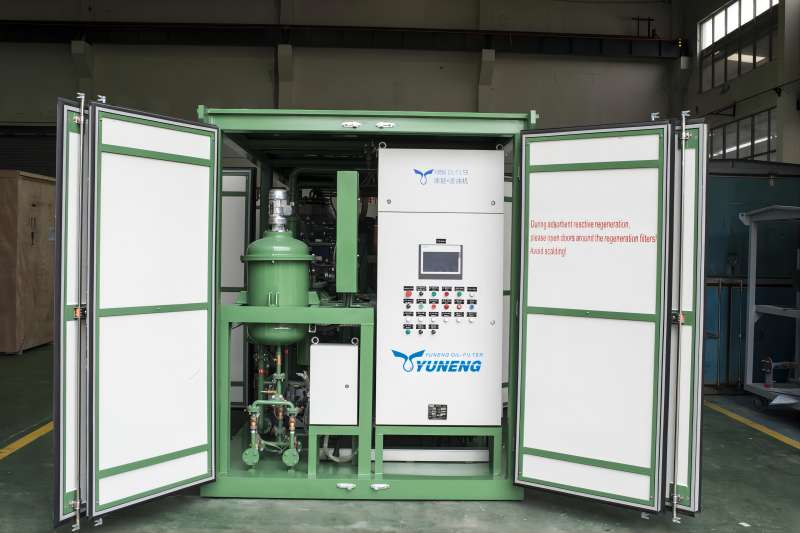Exactly How Regenerated Transformer Oil Extends Transformer Lifespan
The function of transformer oil is critical in making sure the dependability and longevity of transformers, offering as both an insulator and coolant. Regrowed transformer oil supplies a compelling service to improve these features by efficiently removing harmful pollutants that jeopardize performance.
Value of Transformer Oil
Transformer oil plays a vital duty in the reliable operation of electric transformers. It primarily works as a protecting tool, stopping electric discharges and making certain that parts run safely under high voltage problems. The oil's dielectric buildings are basic to preserving the stability of the transformer, as they reduce the risk of failures that could bring about devastating events or expensive downtimes.
Along with its shielding capacities, transformer oil likewise functions as a coolant. As transformers run, they create warmth that should be dissipated to avoid getting too hot and succeeding damage. The oil flows within the transformer, transferring and soaking up heat far from important parts, therefore keeping optimum operating temperatures.
Additionally, transformer oil functions as a barrier versus wetness and pollutants, which can endanger the efficiency and longevity of the transformer. Its chemical residential or commercial properties aid in reducing the effects of acids and various other by-products that might develop with time, adding to the total health of the electric system.
Benefits of Regenerated Oil

Additionally, regenerated transformer oil has a lower degree of contaminations, including bits and impurities that can deteriorate efficiency. This pureness not just enhances the oil's thermal conductivity however likewise expands the operational life expectancy of transformers by decreasing overheating threats. The improved thermal stability of restored oil makes certain consistent efficiency even under high operating temperature levels, which is essential for maintaining transformer effectiveness.
An additional advantage is its ecological impact. Regenerated oil promotes sustainability by reducing waste and the need for new oil production, thus reducing the carbon footprint related to transformer upkeep. Regenerated Transformer Oil. Additionally, the durability of regrowed oil translates to lower maintenance costs in time, as fewer oil changes and less frequent equipment downtime are called for.
Refine of Oil Regrowth
The regeneration of transformer oil involves a systematic process developed to restore the oil's initial residential or commercial properties and enhance its efficiency. This procedure normally starts with the elimination of the used oil from the transformer, which is then subjected to various purification strategies.
The initial step in the regeneration process is the purification, where solid contaminants such as steel, dust, and sludge bits are eliminated. This is typically complied with by vacuum distillation, which assists to remove dampness and unstable compounds, consequently enhancing the oil's dielectric toughness.

Influence On Transformer Efficiency
Restoring the properties of regenerated transformer oil substantially influences the general efficiency of transformers. Boosted dielectric strength is just one of the most crucial benefits, as it permits much better insulation and lowers the possibility of electric breakdown. This enhancement results in a much more secure operation under high voltage conditions, inevitably leading to boosted performance.
Furthermore, the elimination of contaminants and deterioration items throughout the regeneration process lessens the risk of overheating. Cleanser oil facilitates better warm dissipation, which is important for preserving optimum operating temperature levels. Therefore, the thermal performance of the transformer is enhanced, permitting greater loads without jeopardizing integrity.
In addition, the chemical security of regenerated oil ensures extended operational life. It resists oxidation and deterioration, lowering the frequency of maintenance interventions and oil substitute. This stability not only contributes to improved performance however likewise straightens with sustainability objectives by minimizing waste.
Future of Transformer Maintenance
As advancements in technology continue to reshape the landscape of electric design, the future of transformer upkeep is positioned for substantial makeover. The assimilation of clever innovations, visit this website such as IoT sensors and predictive analytics, enables real-time tracking of transformer health and wellness, improving the ability to preemptively address problems before they escalate right into significant failures. This proactive approach not just makes best use of functional effectiveness but also expands the life expectancy of transformers.
Moreover, the application of fabricated intelligence (AI) in information evaluation permits more precise fault discovery and medical diagnosis. By leveraging device learning formulas, maintenance groups can identify patterns in functional information that human analysts might ignore, bring about even more enlightened decision-making.
Furthermore, the fostering of environmentally friendly practices, consisting of the use of regenerated transformer oil, is established to redefine upkeep protocols. This lasting strategy not just lessens ecological impact however additionally improves the general health and wellness of the transformer.
Lastly, the shift in the direction of automation in upkeep processes is expected to improve procedures, lower downtime, and lower expenses. As these advancements continue to develop, the future of transformer upkeep will undoubtedly come to be more reliable, reputable, Click This Link and lasting, making certain the integrity of important electrical infrastructure.
Conclusion
The use of regenerated transformer oil dramatically enhances the operational longevity of transformers. By efficiently recovering dielectric strength and thermal stability, this oil plays a vital duty in mitigating threats related to overheating and oxidation. The regeneration process not only removes damaging pollutants however also minimizes maintenance frequency and oil replacement costs. Ultimately, the adoption of restored oil represents a critical improvement in transformer maintenance, guaranteeing optimal performance and sustainability in the management of electric infrastructure.
The duty of transformer oil is crucial in making sure the reliability and long life of transformers, serving as both an insulator and coolant.Transformer oil plays a vital role in the efficient procedure of electric transformers. Regenerated oil advertises sustainability by lowering waste and the requirement for new oil manufacturing, thus lowering the carbon footprint connected with transformer upkeep.Recovering the buildings of regenerated transformer oil substantially influences the total performance of transformers.The application of regenerated transformer oil substantially improves the functional longevity of transformers.
Comments on “Vital Insights right into Transformer Oil Regeneration for Operators”